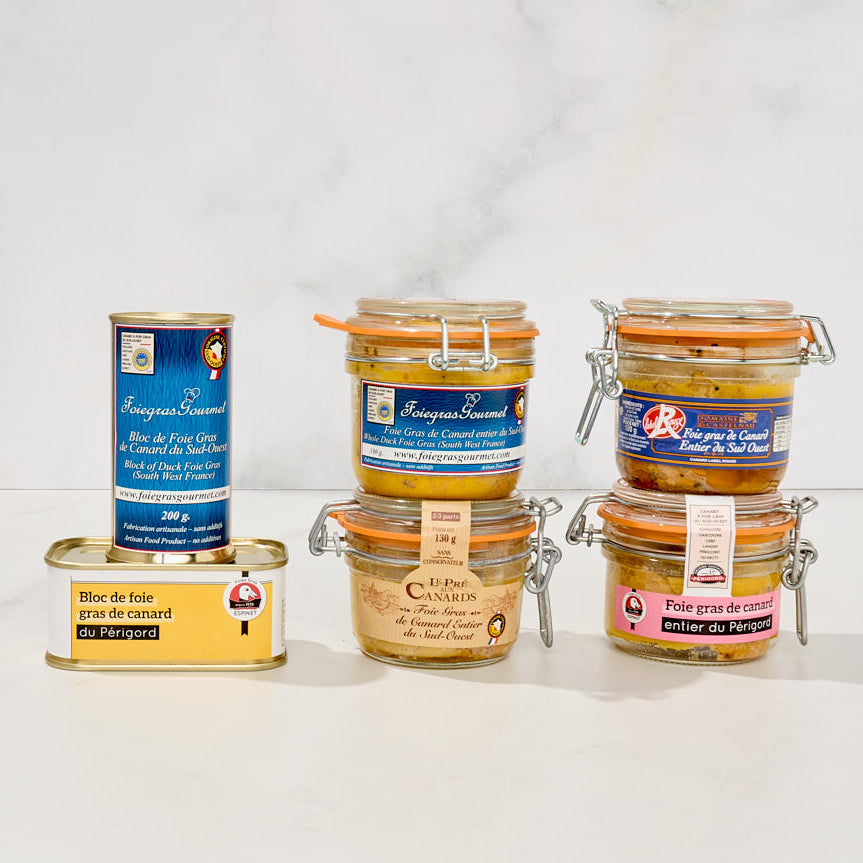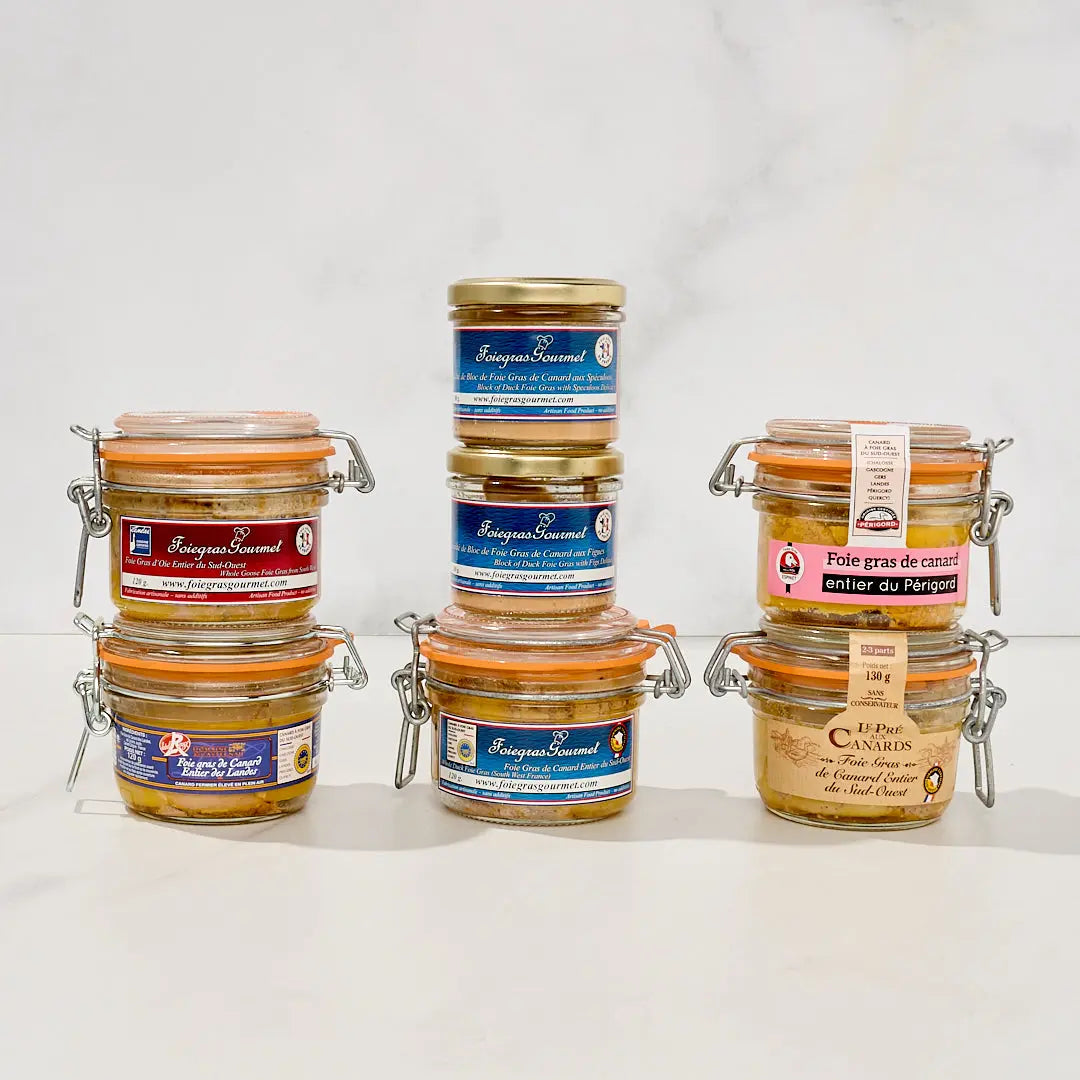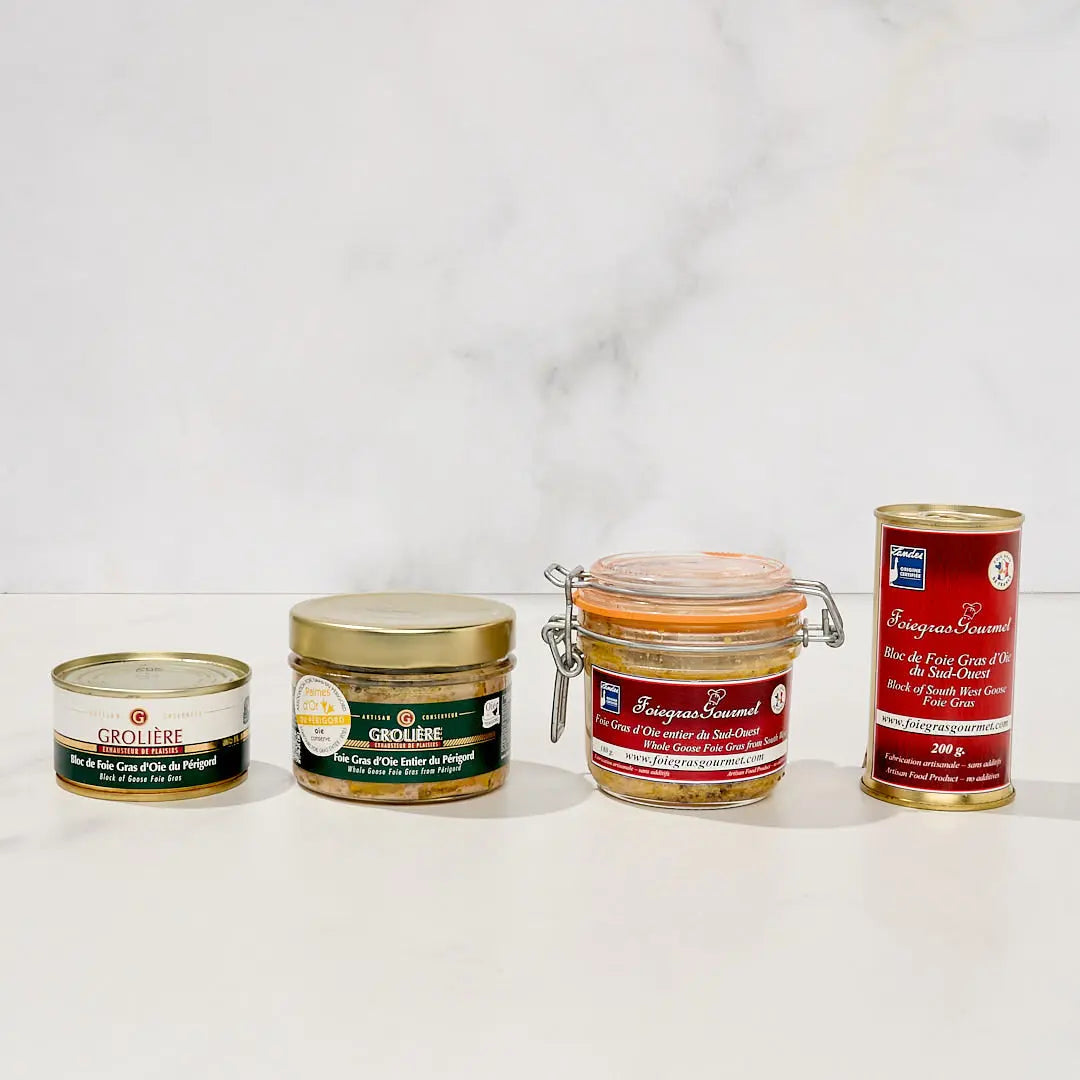Cooking methods for different types of foie gras
Foie gras is a French specialty enjoyed with a wide variety of products, all of high quality. Just as there are different types of foie gras, there are also several cooking methods, depending on whether it is duck or goose foie gras found in your kitchen…
This famous foie gras is sold in various formats: it can be found raw or already prepared with different degrees of cooking.
Let's take a quick look at these different versions!
How to cook raw foie gras
This type of foie gras is the freshest and is generally bought to be pan-fried or made into a terrine. In the latter case, the liver is deveined, seasoned, then placed in a mold (terrine) before being slowly cooked in a bain-marie, in the oven, at a low temperature (between 55 and 58 °C). Then, it must be left to cool and stored in the refrigerator to rest for at least 24 hours before tasting.
To remember: this version is preferred for making good homemade foie gras, as cooking foie gras yourself allows for a multitude of delicious ideas. In any case, raw foie gras must always be cooked in a terrine or pan.

Goose or duck foie gras?
Although one tends to think more of goose foie gras than duck foie gras, it is actually the latter that dominates: more than 95% of production in France! And while duck foie gras has a stronger and more rustic taste than goose foie gras, it is also cheaper and slightly richer in fat.
How to cook semi-cooked foie gras?
Foie gras is often sold semi-cooked and found in the fresh section. Thanks to its gentle cooking, it has a fine and homogeneous texture that preserves all its flavor and natural fat, making it a ready-to-eat product without additional cooking.
Semi-cooked foie gras can be kept for two to three weeks in the refrigerator when vacuum-packed or in a terrine, and for several months when presented in a pasteurized, hermetically sealed glass jar (always check the expiration date). Once opened, it should be consumed quickly, within a few days, to preserve its optimal quality.
To remember: this format is ready to eat and appreciated for its delicacy, but it remains more fragile than canned foie gras, as it must be kept refrigerated and consumed within a shorter time frame.
How to cook canned foie gras?

This version, cooked at a high temperature (110–115 °C) then sterilized directly in a metal tin or glass jar, can be stored for several years at room temperature, provided it is kept in a cool, dry place (ideally between 10 and 15 °C).
To remember: once purchased, it requires no further cooking. You just need to open it, unmold it, and serve it chilled or at room temperature, accompanied by bread, jams, or a sweet wine.












Hallo Ine, ja, ik raad je aan om zoveel mogelijk vet uit je foie gras te halen. Vet is niet lekker op brood. Maar als je het eenmaal hebt verwijderd, kun je het vet in een glazen pot in de koelkast bewaren en het vervolgens gebruiken om vlees, eieren, enz. te bereiden. Het is uitstekend.
Moet de in de oven gegaarde foie gras uit het vet worden gehaald nadat hij gaar is
Hallo Roosje, bij foie gras komt het vet normaal gesproken vrij tijdens het koken. Als er te veel vet in zit, is dat geen teken van goede kwaliteit. Een deel van het vet loopt niet weg en kan in de terrine achterblijven. Ons advies: kies voor een foie gras van goede kwaliteit, of snijd de foie gras eventueel in plakjes voordat u deze kookt.
Hello Roosje, with foie gras, the fat is normally released during cooking. If there is too much fat, it is not a sign of good quality. Some of the fat does not drain and may remain in the terrine. Our advice: choose a good quality foie gras, or possibly slice the foie gras before cooking it.
Alle jaren gaar ik een terinne fois gras voor Kerst van 1 kg
Ik doe dat in bain Marie. Oven vòòrverwarmen op 200graden
Daarna 50 min op 150 graden.
Ik heb een nieuwe oven zodat het toch anders was.
Midden-in had ik brokken gestold vet, wat liep er fout ?
Buongiorno Gabriele, per raggiungere la perfezione culinaria, la scaloppina di foie gras d’anatra scottata in padella deve raggiungere una temperatura interna compresa tra 50 e 55°C. Ciò ti consente di mantenere una consistenza fondente pur essendo molto caldo all’interno. La cottura dovrà essere veloce, a fuoco vivace, per ottenere una bella crosticina dorata senza scuocere l’interno.
Leave a comment